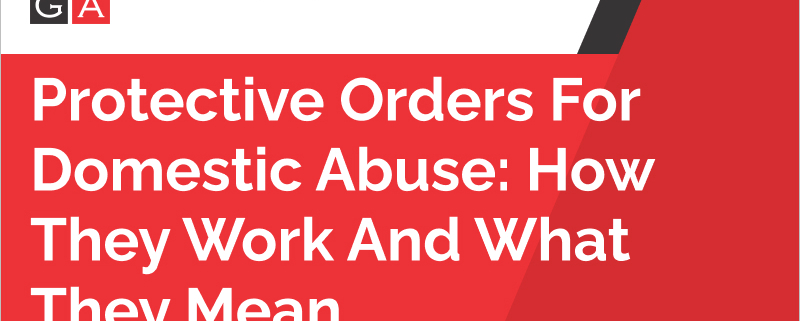Protective Orders for Domestic Abuse: How They Work and What They Mean
Did you know that one in four women and one in nine men will experience severe domestic abuse in their lifetime?
For many victims, obtaining a protective order is peace of mind and a critical step toward regaining control of their lives. But protective orders are more than legal jargon—they can be powerful tools to protect people from further harm. Understanding how protective orders work is crucial, especially if you’re seeking protection or have been accused of violating an order against you.
Learning about protective orders can feel overwhelming, especially when emotions are high, and you’re faced with starting over without someone in your life. However, you don’t have to go through it alone.
Cega Law Group can help you understand the basics of protective orders, including the types availableand what happens if they’re violated. We aim to simplify a complicated topic so you can focus on moving forward.
Understanding the Basics of a Protective Order
A protective order, or a restraining order, is a binding legal document issued by a court to prevent further harassment and abuse. Consider it a legal “stay away” or “stop” sign. It’s designed to keep the abuser away from the victim, often including stipulations like “no contact” or surrendering firearms (in severe cases of domestic violence).
Protective orders can be issued in proven cases of physical abuse, stalking, threats, and harassment, and not only for romantic partners. They can apply to anyone, from roommates and family members to coworkers and acquaintances (who may be repeatedly harassing or stalking you).
The bottom line is that knowing the law is on your side can be a small but powerful comfort if you’re feeling unsafe.
Types of Protective Orders: Which One Applies?
There’s no one-size-fits-all solution for protective orders. Different situations call for various orders, each customized to address specific circumstances. Here are a few protective orders to choose from in plain, understandable terms.
1.Emergency Protective Orders (EPOs). These orders are issued by law enforcement and provide immediate, temporary protection (typically 7 days). They’re ideal for urgent situations where someone may be in immediate danger.
- Temporary Restraining Orders (TROs). These short-term orders last until a court hearing, usually 2 to 3 weeks. They’re designed to protect while a judge considers long-term solutions to a domestic violence situation.
- Permanent Restraining Order. “Permanent” orders generally last 1 to 5 years and are issued via a formal court hearing. They’re used in cases where ongoing protection is necessary.
- Criminal Protective Orders (CPOs). Tied to criminal cases, these orders protect victims during criminal justice processes. They’re often issued when domestic abuse charges are involved.
- Civil Harassment Restraining Orders. These orders apply to individuals outside close relationships, like neighbors, strangers, or coworkers. They address harassment, stalking, or threats from non-intimate parties.
What Happens if a Protective Order is Violated?
Violating a protective order is a serious offense. Depending on the severity of the violation, the consequences range from jail time to penalty fines. If a breach occurs, the victim should contact the police immediately.
Even an unintentional violation, like a voicemail or text message, can have severe legal repercussions for the accused. To avoid trouble, both parties must understand the terms of the order and comply.
 Call Now:
Call Now: info@cegalawgroup.com
info@cegalawgroup.com










